Graz
Les Dossiers synthétiques et d'enjeux sont disponibles gratuitement.
Merci de vous inscrire et vous connecter pour accéder au Dossier complet de site.
- Dossier synthétique EN
- Le site sur Google Maps
- Retour à la carte
Données synthétiques
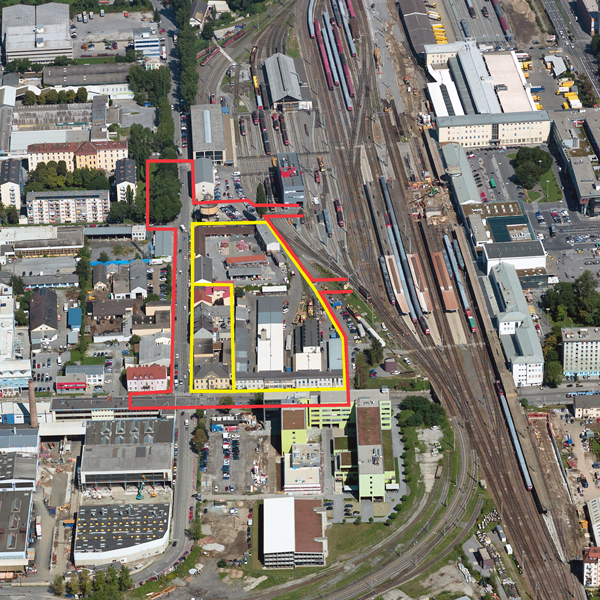
Category architectural (urban scale)
Location Graz, Österreich
Population 280,000 inhab.
Strategic site 3.2 ha - Project site 1.6 ha
Site proposed by City of Graz and ÖBB (Austrian railway company)
Owner(s) of the site ÖBB & Hanschmann GmbH
Commision after competition Design of architectural project, possibly in partnership with other architects
Team representative architect
Information complémentaire
How can the site contribute to the adaptable city?
The site is currently undergoing a process of major urban transformation. It is part of a redevelopment area located around the main station. Lying just next to it, on the opposite side of the tracks, the site plays a crucial role within the new station quarter: the urban configuration of the site has to connect the already redeveloped main station area on the east side to the future developments. It will be a gate to the whole area lying west of the tracks that up until now had been rather cut off from the rest of the city. The entrances of two underpasses – the main pedestrian connections of the the two sides – are located on the site. Their integration into a solid public space will be key to the development of the whole area. In relation to its surroundings the development of the site acts as a trigger: combination of a mixed-use program (housing, working, commerce, social infrastructure) and high quality public spaces initiates a transformation of the area into an urban neighbourhood.
City strategy
The western side of Graz is currently a focus area for inner city redevelopment. In the west of Graz, the city pursues the conversion of several abandoned industrial areas into mixed use neighbourhoods – many of them located along the railway tracks. These developments are part of a broader strategy that aims for a sustainable development of the city, fostering inner city growth to counter processes of suburbanisation and the consumption of green spaces. The strategy of the city favours urban forms of living and a densification of the city structure while it seeks to raise the standards of living. Accordingly, new developments have to provide high quality of public spaces as well as access to recreational areas; they have to strengthen sustainable mobility and provide a socially balanced development.
Site definition
The site is part of an industrial band lying between the rail tracks and Waagner-Biro-Straße which is the main access street to another large development area to the North of the site. In the South it is bordered by Eggenberger Straße, an urban axis connecting the historical center to a renaissance castle on the hills. In the course of the redevelopment of the area, both streets will be turned into pedestrian friendly public spaces. Two underpasses connect the site to the the platforms and the main station on the eastern side of the tracks. Located next to a large transportation hub as well as a tram line, the site is well connected to local public transport and the supra-regional railway system. On the site, most of the existing buildings will be removed except the water tower which is a historic landmark and buildings on the south-western corner of the site. Recent developments in the area include a university campus, a multi-purpose hall and a new park.
Future of the site in relation to the site family and to Adaptability
Sharing 1: Urban Space - Strong Mix – The site will be converted into an urban neighbourhood comprised of a mix of different uses. It will accommodate different kinds of actors: those passing through, or staying briefly; those working and those living on-site. Therefore, the development will add to the housing program commercial, cultural and social facilities that are attractive to visitors but will also provide recreational spaces to locals that can be appropriated. The urban configuration of the development has to link the site to its surroundings, like new alleys or existing industrial structures, and has to be able to adapt to its ongoing transformations.
Sharing 2: Built Structures – The built structures will house a diverse range of uses and have to adapt to their different rhythms and requirements. Simultaneously, they have to react to environmental impacts like the emission of noise coming from the streets and the tracks. The spatial structure has to combine and distribute the different programs in such a way so that they can profit from each other and form a sustainable unit. The structure should allow for diverse urban situations: working and infrastructural spaces have to be adaptable while housing spaces should invite a wide range of inhabitants.
Impulse for the Quarter – The urban configuration of the Europan site will play a major role for the development of the whole area: it will be the gate to the new neighbourhood in the west and a trigger for later developments. It will be one of the first developments realized in the quarter and its urban conception sets the tone for later projects. As the main access point to/from the railway station it plays an important part in the creation of the neighbourhood´s identity.
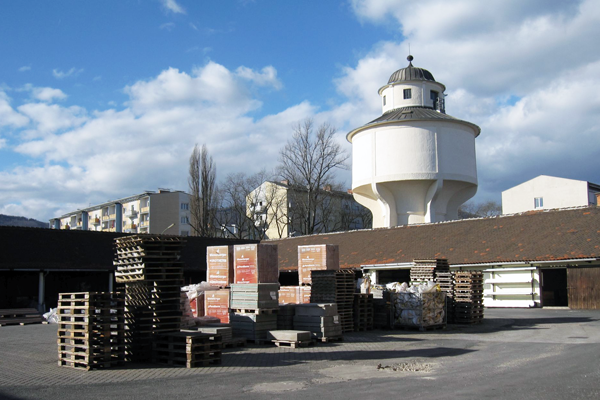
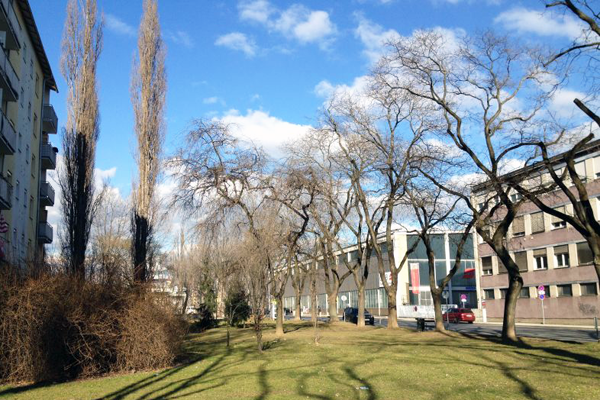
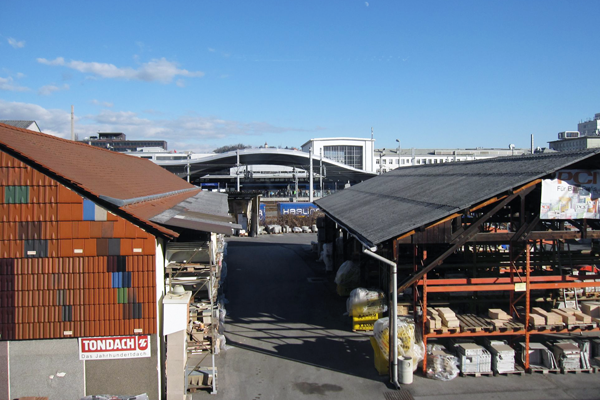
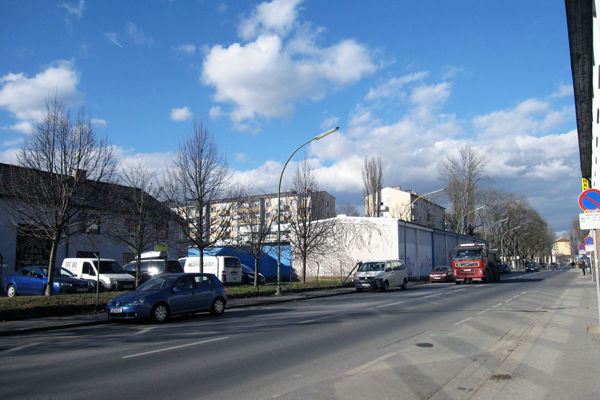
Questions à propos du site
We are a group of master students who graduated from schools in United states. Is a licensed architect a mandatory requirement to be our team representative? If we do not have any liscensed architect in our team, could we still participate?
You can only participate if you can name a Team Representative according to the rules.
Quote of the rules:
Team Representative
Each team names one “Team Representative” among the associates. The Team Representative is the sole contact with the national and European secretariats during the whole competition.
The Team Representative must be an architect with a qualification from a European country or must have the architect status under the laws of a European country. In specific cases and when mentioned on the site definition (see Synthetic Site File), the Team Representative can be an architecture, urban or landscape professional (architect, landscaper, urban planner, architectengineer). In this case the team shall necessarily include at least one architect among the associates.
The brief asks to respect the existing plot borders –unless proving a highly convincing added value– since in case of an attached configuration of buildings across the two plots, a fire-wall has to run along their borderline separating the buildings along its course. Does this include underground spaces (the parking garage)?
If there is a good reason not to respect the plot borders, it is possible to ignore it. In this case all building regulations (limit distances) concerning plots of different ownership do not apply.
Firewalls along the plotlines are only necessary if the ownership-issue (two owners) is respected.
In any case the ownership for the plots of the non-participating private owners along Waagner-Biro-Straße has to be respected - Here all building regulations on different ownership (limit distances) apply.
Additional information about building regulations will be uploaded soon.
The maximum soil sealing is 60%, at least 40% of the soil has to be permeable.
1. Does this mean 40% of the total site surface has to be permeable (7,103m2 of 17,757m2) or 40% of the non-built surface?
2. Does this exclude underground parking on 40% of the surface? Or is a layer of soil on top of a parking garage considered permeable?
At least 40% of the total site surface has to be permeable.
On top of a parking garage a layer of soil of minimum 70cm is considered to be 50% permeable.
In the brief it is said that details of the "Bahnhofsviertel West " urban study would be uploaded as well as other details. When will this be done?
The excerpt of the urban study got uploaded today, 28th of April.
North underpass arrives to the site next to it Eastern border. Does Southern underpass also next to East border or more into site center? Is this position fixed or could we propose new underpass exit/entering point?
In the plan (GRAZ-AT-PS-M1.dxf) the position of the current end of the Southern tunnel (a closed wall) is drawn. Of course the exist/access of the Southern tunnel should be located in the project site.
Please consider: The longer the tunnel, the more expensive!! Therefore a position in the project site near the Eastern edge is recommended. Nevertheless the exact position of the exit/entering point is not defined yet and should be proposed by the participants. Rules regarding ramps need to be considered: maximum slope: 4% or 6% (then every 10m a platform of 1,5m needs to be implemented)
What are the building heights of Bahnhofsviertel west?
The department of city planning has not yet confirmed the height development of the study. In the section of the excerpt of the study (GRAZ-AT-SS-M9, page 4) you can compare the heights of ´Bahnhofsviertel West´ with existing city fabric and estimate the floor heights, and use them for your sections/drawings.
Regarding the density: If the site is 16,500 sqm and the FAR is 2,5-3, does this mean that the maximum built surface should be between 41,250-49,500 sqm? If the parking lots are underground, does this surface count 100%?
Project site of 16,500 sqm and FAR of 2,5 - 3 = The total gross floor area 41,250 sqm - 49,500 sqm.
Underground gross floor area (also underground parking) is not included and is calculated extra as underground gross floor area.
Is it possible to get an updated .dwg file wherein the current situation is up to date with the tram line going underneath the tunnel and the new tram stop at the Hauptbahnhof, plus with a clear distinction what the exact limits are of the plot instead of a very big vector (double line)?
There is no updated version of CAD provided. The limits of project and study site are exactly drawn in the CAD file.
In the document (GRAZ-AT-SS-M9) describing the urban plan of Architektenburo Zechner and Zechner their is an image projected regarding the building heights of the site and their urban plan. What are the exact heights/amount of floors of the buildings across Wagner-Birostrasse?
The department of city planning has not yet confirmed the height development of the study. In the section of the excerpt of the study you can compare the heights of ´Bahnhofsviertel West´ with the existing city fabric, estimate approximately the heights and use it for your drawings.
In the program document (GRAZ-AT-SS-M10) it states that the permeable area of the public space should be 40% of the plot, is it then possible to build underground? What is exactly meant by permeable?
"permeable" means "permeable to water". It is possible to build underground, then a a layer of soil of minimum 70cm is considered to be 50% permeable.
Within this 40% of permeable public space, it states that the half should be dedicated to recreational space (20% of the plot). What is your definition of recreational space?
Recreational space is considered to be public space for recreation and leisure: piazzas and squares with an excellent landscape design including trees and grass, playgrounds, areas to sit, etc.
In one document (GRAZ-AT-SS-M11) it describes the distances of the buildings. It is unclear if these distances are regarding distances between the new buildings and the existing buildings of the non-participating neighbours and watertower or between the new buildings itself. We would like to ask for some more clarity about this subject.
See new uploaded document GRAZ-AT-SS-M13.pdf with updated building regulations.
The document GRAZ-AT-SS-M11.pdf is not valid anymore and got deleted.
40% of total site surface has to be permeable. Only for ground floor or upper surface ( i.e roof) can also count as permeable?
On top of a floor (eg roof or on the groundlevel on top of an underground parking garage) a layer of soil of minimum 70cm is considered to be 50% permeable. In general
What is the Southern underpass base level / deepness from the ground?
Southern tunnel:
- level of floor: 359m
- level of ceiling: 362,50m
= roomheight in tunnel 3,50m (clearance)
- level of the railwayplatform above the tunnel: 364,50m
- level of the project site: ~ 364m (approx. in average)
In reference to building heights, in the brief it is said that is left to the teams. But, If proposing high raise buildings, then they cannot be higher than the Schlossberg and has to take into consideration the clock tower height. Could you give an idea of the height of them?
The scenic context o the city has to be considered for design of high-rise-buildings. A building cannot be higher than the Schlossberg and also has to take into consideration the appearance of the clocktower (Uhrturm).
Schlossberg:
- 474m above sea level (project site approx. 360m above sea level)
- 123m above the main square in Graz (Grazer Hauptplatz approx. 350m above sea level)
Clocktower:
- Height: 28m
- Height of the foot level: approx. 80m above the Schlossbergplatz (approx. 350m above sea level) = approx. 430m above sea level.
The passage to the train station will be closing at night? Is yes, what’s the schedule when this is open for pedestrians?
The northern tunnel is currently closed between 0:15 and 04:00AMt. The same opening hours will be applied for the southern tunnel.
In the document GRAZ-AT-SS-M11 is said that the distance between the buildings and the plot borders have to be the number of floors plus 2 m. Is it posible to locate buildings without keeping a distance from the eastern plot border, since this is the border towards the railway tracks?
Yes, it is possible to put buildings along plot boundaries which are facing public traffic areas: Buildings along the rail-tracks and along Waager-Biro-Straße are possible. Noise protection has to be considered.
See new uploaded document GRAZ-AT-SS-M13.pdf with updated building regulations.
The document GRAZ-AT-SS-M11.pdf is not valid anymore and got deleted.
According to the document AT-SS-M12, the 40% of 16500 m2 has to be permeable soil. In the proposals should this 40% be placed in the core area or we can consider that part of it could be placed in the extended area?
This 40% should be placed in the core area. (40% of 14.500m2 )
See new uploaded document GRAZ-AT-PS-M6.pdf - table of program - to be filled in and add to A3 booklet.
Document GRAZ-AT-SS-M10.pdf and GRAZ-AT-SS-M12.pdf are not valid anymore and got deleted.
Project site is 14.500m2 = core area = private ownership is not included.
What is the Project Site Area (PSA)? Is PSA the yellow polyline =14600 m2? Is PSA = yellow polyline of 14600 m2 + yellow polyline private ownership area 3150 m2 = 17.750 m2? Is PSA including the square around the watertower but not including the private ownership areas = 16500 m2?
We apologize the confusion.
See new uploaded document GRAZ-AT-PS-M6.pdf - table of program - to be filled in and add to A3 booklet.
Document GRAZ-AT-SS-M10.pdf and GRAZ-AT-SS-M12.pdf are not valid anymore and got deleted.
Project site is 14.500m2 = core area = private ownership is not included.
Which of the two Table of Program forms has to be filled and added to the A3 digital documents? Graz-AT-SS-M10 or Graz-AT-SS-M12?
We apologize the confusion.
See new uploaded document GRAZ-AT-PS-M6.pdf - table of program - needs to be filled in and added to A3 document.
Document GRAZ-AT-SS-M10.pdf and GRAZ-AT-SS-M12.pdf are not valid anymore and got deleted.
Le site est lié au thème suivant
Comment transformer des obstacles physiques en nouvelles connexions ? Il s’agit de créer des « ponts » comme des connections linéaires entre différents contextes, surplombant une obstacle qui peut être une rivière, un chemin de fer ou d’autres barrières physiques. Parfois cependant, il est possible de transformer l’obstacle afin qu’il devienne producteur de mouvements dans différents sens et directions, passant alors de barrière de séparation en élément connecteur. L’obstacle peut être habité, coupé, entrecroisé ; il peut être l’opportunité d’augmenter la densité, de changer les fonctions des entités divisées ou encore apporter une nouvelle perspective à un contexte familier.
Questions à propos du site
Pour pouvoir poser une question, vous devez être connecté (et, par conséquent, inscrit au concours).
Ve. 16 mai 2025
Date limite de soumission des questions
Ve. 30 mai 2025
Date limite de réponses aux questions
Avant de soumettre votre question, assurez-vous qu'elle n'apparaît pas déjà dans la FAQ.
Merci de poser vos questions sur les sites dans le menu Sites.
Merci de poser vos questions sur le règlement dans le menu Règlement.
Si votre question ne reçoit pas de réponse dans les 10 jours, merci de vérifier qu'elle ne figure pas dans la FAQ sous un autre intitulé ; sinon, contactez le secrétariat concerné par email (secrétariats nationaux pour les sites, secrétariat européen pour le règlement.)